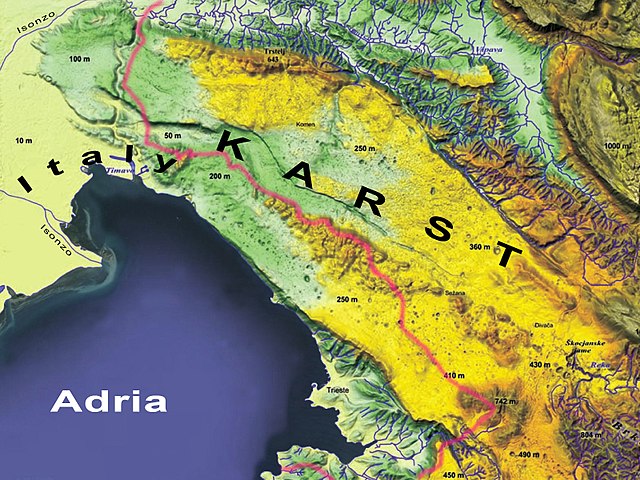Škocjan Caves is a cave system located in Slovenia. Recognized for its exceptional significance, Škocjan Caves was included on UNESCO’s list of natural and cultural World Heritage Sites in 1986. Škocjan Caves is a significant underground phenomenon on the Karst Plateau and in Slovenia. After gaining independence from Yugoslavia in 1991, Slovenia made a commitment to actively protect the Škocjan Caves area. To fulfill this commitment, Škocjan Caves Regional Park was established, along with its managing authority, the Škocjan Caves Park Public Service Agency.
Škocjan Caves
The Reka (solid)-Timavo (dashed) River System of the Yugoslavian and Italian Karst. Settlements: Croatia 1. Vela Voda Slovenia 2. Ilirska Bistrica 3. Vremski Britof 4. Škocjan Italy 5. Trebiciano 6. Monfalcone 7. Trieste
The Big Collapse Doline and Little Collapse Doline in Škocjan are where the cave entrances are located, situated at the bottom of the two collapse dolines.
Rimstone Pools in Škocjan Caves
The Karst Plateau or the Karst region, also locally called Karst, is a karst plateau region extending across the border of southwestern Slovenia and northeastern Italy.
The cliffs of Duino and the gulf of Sistiana, Province of Trieste, Italy, seen from the Rilke Trail
Typical rural Karst houses in Štanjel (Municipality of Komen), Slovenia
Approximate extent of the Karst region
Traditional Karst folk costumes in a Slovenian commemorative celebration in Basovizza near Trieste








